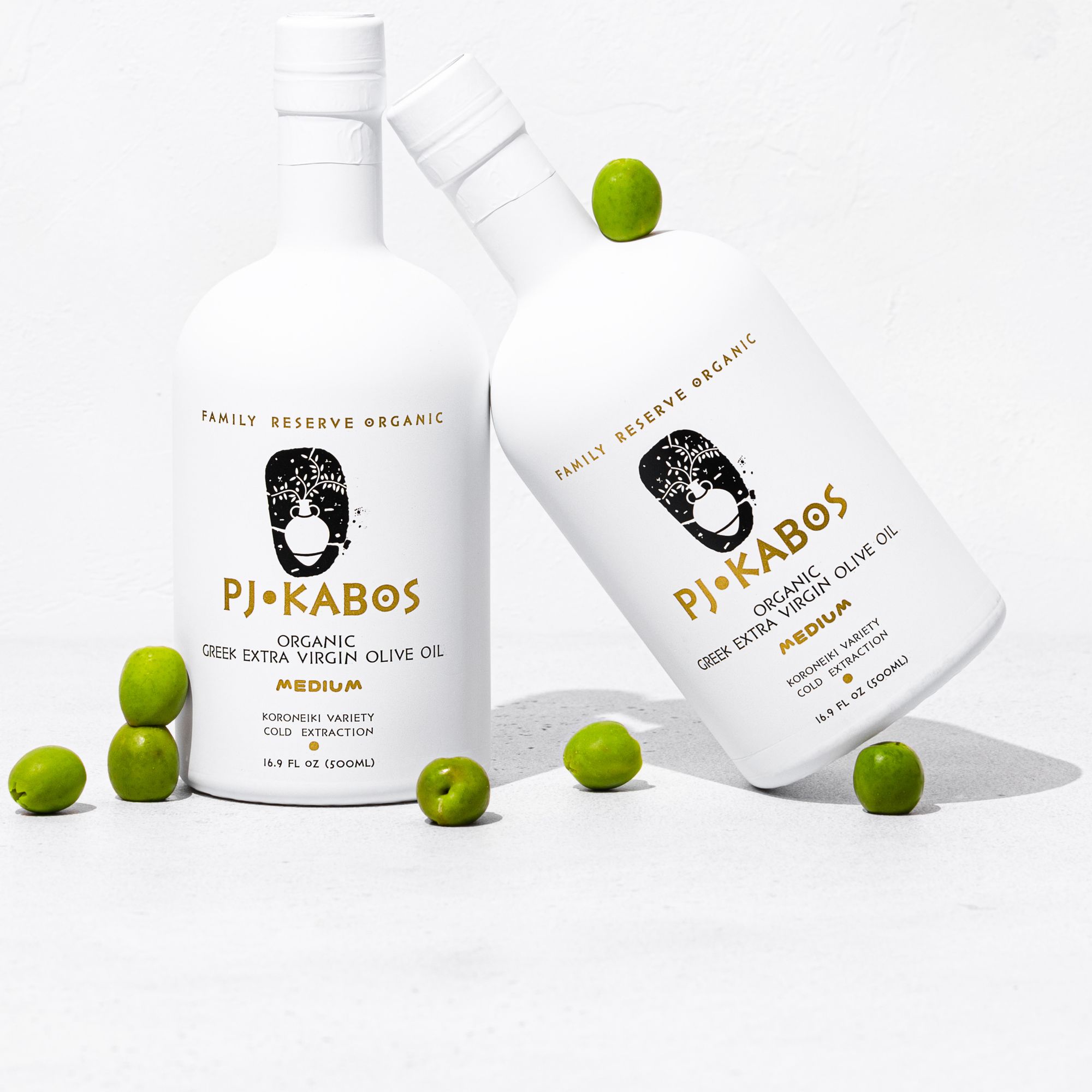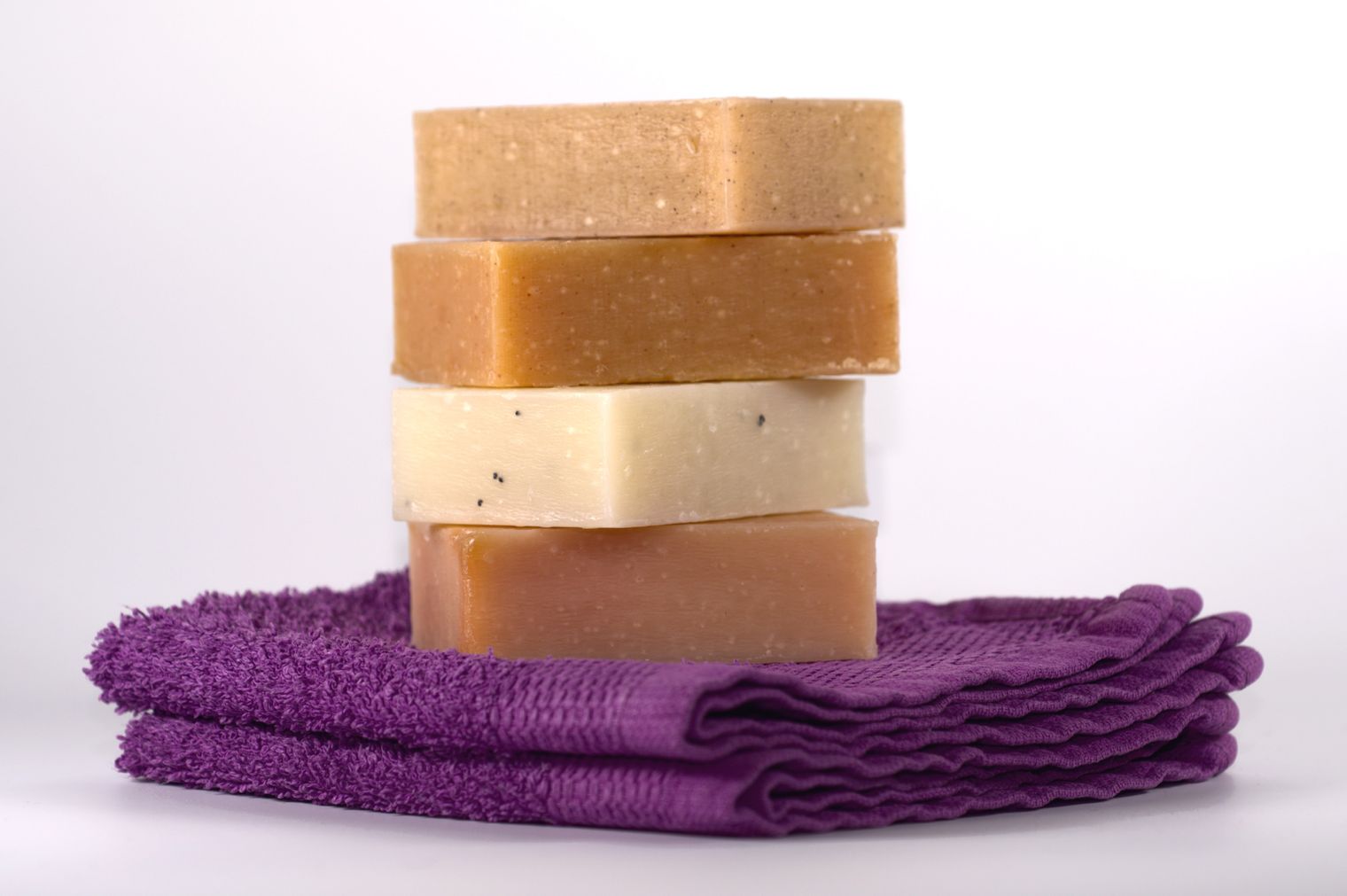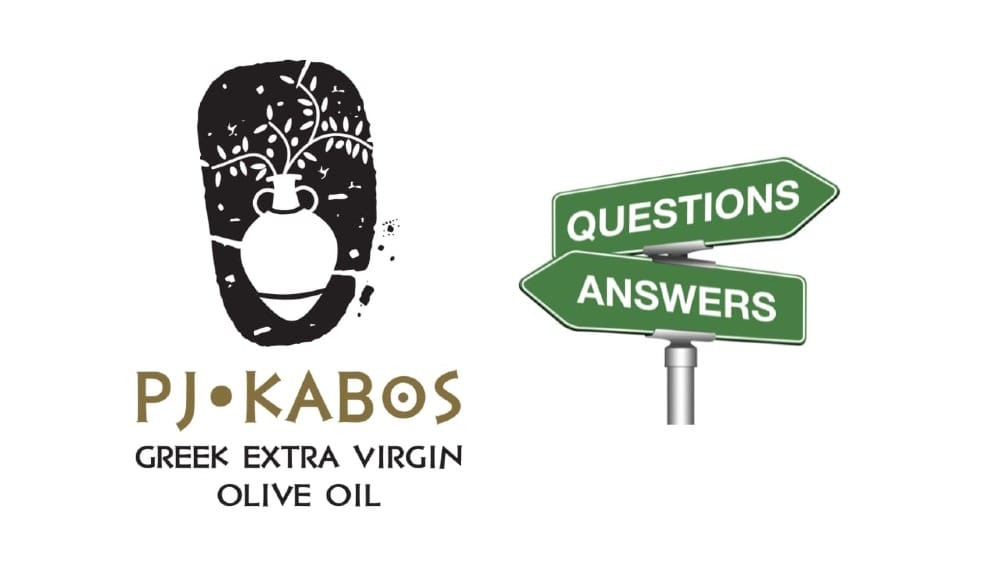Castile soap is a master multitasker within the world of cleaning and body care. You’ve likely seen bottles and bars of it at your local supermarket or health food store under the Dr. Bronner’s brand. But what is it, exactly? And what can you use it for?
Here, we explain everything you need to know about castile soap, plus instructions on how to make castile soap at home!
What is castile soap, exactly?
All soap is made via the chemical reaction, or “saponification,” of a fat and an alkali (i.e. a strong base, such as sodium hydroxide or potassium hydroxide lye). But unlike most other soaps—made with an animal fat such as tallow or lard, or petroleum byproducts like mineral oil—castile soap is completely plant-based and environmentally friendly. Traditionally, castile soap was made by saponifying olive oil with alkali plant ash and water.
Today, other plant-based oils such as coconut oil and jojoba oil may be used as the fat source in castile soap, and essential oils are sometimes added for fragrance. Castile soap can either be made into a hard bar soap or a liquid soap, depending on the type of alkali used.
In addition to being vegan, castile soap has some other big perks. It’s biodegradable and does not contain irritating synthetic ingredients such as sodium laureth sulfate (SLES) or sodium lauryl sulfate (SLS), making it an effective yet gentle cleanser that’s great for people whose skin is prone to irritation.
Where does castile soap come from?
Castile soap originated in the Castile region of Spain, but it was likely an adaptation of Aleppo soap, which originated in Syria. Aleppo soap was (and still is) made by boiling olive oil, lye, and bay laurel oil. It’s said that Muslims traveling from the Middle East into Europe brought Aleppo soap with them sometime around the 12th Century, and when they ran out, soap makers attempted to duplicate it as best they could (minus the hard-to-find laurel oil) by boiling olive oil with the alkali ash of halophytic plants. The result: castile soap.
From that point, castile soap surged in popularity, first among Spanish royalty, and then throughout Europe. Around the 1880s, the Heilbronner family invented the first liquid castile soap, which initially supplied washrooms across Germany. Eventually, the family would create the Dr. Bronner’s brand of castile soaps.
How to make a simple Castile soap with olive oil
Yep, you can actually make your own castile soap at home—and while it is time consuming, it’s actually not that hard and only requires a few ingredients. We recommend making liquid castile soap, as it’s much more versatile than bar soap for use around the home.
Just keep in mind: Soap making soap requires handling potassium hydroxide lye, which is highly poisonous if ingested and may cause burns and irritation if touched or inhaled. Always keep lye away from pets and children, and wear gloves, safety glasses, and a mask while using it. For more on how to properly handle lye, check out this article.
Homemade Liquid Castile Soap
Yields: 1 gallon
KITCHEN SUPPLIES
- 6-quart slow cooker (or larger)
- Glass or stainless steel mixing bowls
- Immersion blender
- Measuring cups
- Glass or plastic jug containers for storage
- Kitchen scale
- Silicone spatula or wooden spoon
- Disposable wooden skewers
SOAP INGREDIENTS
- 3 cups (24 oz) regular or extra virgin olive oil
- 2 cups (16 oz) coconut oil
- 9.35 oz potassium hydroxide lye flakes (Essential Depot is popular for soap making)
- 4 cups distilled water (for mixing lye)
- 10+ cups distilled water (for liquiefying soap)
SAFETY GEAR
- Safety glasses
- Kitchen gloves
- Mask
INSTRUCTIONS
1. Heat your oils: Add the olive oil and coconut oil to a slow cooker, and set heat to high (the slow cooker will remain on high until step 9). Traditional castile soap only features olive oil as a fat source, but some soap makers find that the combination of olive oil and coconut oil improves castile soap’s cleansing abilities and texture.
2. Prepare the lye mixture: Put on gloves, goggles, and a mask and go to a well-ventilated area. Add 4 cups (32 oz) of distilled water to a stainless steel or glass mixing bowl. Then, measure out 9.35 ounces of potassium hydroxide lye flakes into a separate bowl, using a kitchen scale for accuracy. Slowly add the lye flakes to the distilled water—never the other way around. Things will bubble a bit, but that’s fine. Use disposable wooden skewers or a silicone spatula to mix until all of the lye is dissolved in the water.
3. Combine the lye mixture and oils: Give the oils in your slow cooker a stir to make sure they are combined. Then, carefully (meaning, slowly) pour your lye mixture into the slow cooker.
4. Blend the lye-oil mixture: Place the bottom of your immersion blender into the lye and oil mixture, then set the blender to medium speed. Blend until the entire mixture appears opaque and achieves a custard-like consistency; this will take about five minutes.
5. Blend periodically over 30 minutes: Every five minutes, over the course of the next 30 minutes, blend the soap mixture again. At the end of 30 minutes, it should be too thick to blend—kind of like that glue paste you used for arts and crafts as a kid.
6. Stir periodically over three hours: Cover your slow cooker and set a timer for three hours. Then, every 30 minutes within that 3-hour span, lift the lid and give things a good mix with your silicone spatula. By the time you’re done, your soap mixture will change appearance and texture, eventually becoming gel-like and somewhat translucent with a yellowish tint.
7. Test your soap’s doneness: This clarity test is important for telling if the potassium hydroxide lye has been completely cooked out of your soap mixture—which is what you want! First, boil a half cup of water and pour it into a clear glass bowl or Pyrex measuring cup. Then, add a tablespoon-sized glob of the soap mixture to the hot water and stir until dissolved.
- Is the liquid translucent? Great, you can move onto the next step.
- Is the liquid cloudy or scummy? Heat your soap mixture for an additional 30-60 minutes, then test again.
8. Dilute the soap mixture: At this point, your soap mixture is way too thick, so you need to dilute it. Add 10 cups of distilled water to a pot on the stove and heat until hot but not boiling. Slowly pour the hot water into your slow cooker, then break up and stir the soap mixture with the spatula to the best of your ability (it doesn’t need to be perfectly dissolved).
9. Allow soap mixture to liquefy: Next, cover your slow cooker, lower its setting from hot to warm or “keep warm,” and allow it to remain undisturbed for about eight hours. During this time, any remaining soap chunks should liquefy. If any remain, stir in another cup of water.
10. Bottle your soap: At this point, your soap is ready to bottle. This recipe yields about a gallon, so you can ladle your soap into a clean plastic or glass gallon jug, or several smaller containers, using a funnel to prevent spillage. If you have any glass beer growlers lying around, those work great! This plain liquid castile soap is still fairly concentrated and makes the perfect base for any number of applications, which we’ll dive into below.
11 inventive ways to use liquid castile soap
While hard bar castile soap is great for washing your hands, your body, and even your hair, liquid castile soap is the most versatile, since it’s so easy to measure and dilute for various purposes—you can even jazz it up with a few drops of essential oils for a natural fragrance boost. Here are the top uses of liquid castile soap and how exactly to dilute it.
Hand Soap
In a reusable foaming soap dispenser, combine 1 cup of distilled water and 1/4 cup of liquid castile soap and shake until combined. That’s it! To get fancy, you can also add up to 15 drops of your favorite essential oil(s) for fragrance and additional antimicrobial properties (lavender and tea tree oil are great), and a tablespoon of olive oil for extra hydration.
Body Wash
A small squirt or two of liquid castile soap onto a wet washcloth should be enough to scrub your entire body clean. You can even use castile soap on your face, but use a very small amount with plenty of water.
Shaving Soap
Castile soap works well as a shaving soap for face, armpits, and legs. Work a few drops (or up to 1/2 teaspoon for legs) into a lather in your hands, then apply to the area you want to shave.
Shampoo
While it’s not the most luxurious shampoo, you can use liquid castile soap in a pinch. Wet your hair thoroughly then work in up to 1/2 tablespoon. After you rinse your hair with water, rinse it again with a diluted apple cider vinegar mixture to prevent soapy buildup.
Pet Shampoo
Get your dog’s fur good and soaked, then gently scrub in enough liquid castile soap to create a decent lather. Start with a small amount and work your way up as needed. For extra odor-fighting power, try this recipe, which combines castile soap, water, and baking soda.
Dish Soap
To create the perfect dishwashing solution, simply combine 10 parts water with 1 part castile soap. But never use castile soap in a dishwasher!
Multi-Surface Cleaner
Combine 1/4 cup liquid castile soap with about 4 cups of water in a spray bottle. Spritz onto surfaces like bathroom countertops and wipe clean with paper towels. You can also add tea tree, lemon, or peppermint essential oil for an antimicrobial punch.
Floor Cleaner
In a bucket, combine 1/2 cup of liquid castile soap and 3 gallons of warm water. Immerse your mop in the solution, wring it out (you want a damp mop, not a wet mop), then start mopping.
Laundry Detergent
Use up to 1/2 cup of liquid castile soap for a large load of laundry (for extra odor-neutralizing power, add 1/2 cup of baking soda). To prevent soapy buildup, add a cup of white vinegar to the rinse cycle. Pro tip: In high-efficiency washers, you can cut these quantities in half.
Natural Plant Insecticide
If bugs are nibbling at your garden or houseplants, combine 1 tablespoon of liquid castile soap with 4 cups of water in a spray bottle and spritz on plants twice a day until they’re gone.
Produce Rinse
A quick rinse of water won’t remove the grit and grime from most fruits and veggies. Instead, add 1/4 teaspoon of liquid castile soap to a warm bowl of water, then dunk, swish, and rinse your produce.
Product placement
PJ KABOS 'Family Reserve Organic - Medium'
High Phenolic and 2022 Gold-Award Winner.
Declared as 'One of the World's Best Olive Oils'.
Click here to shop.





